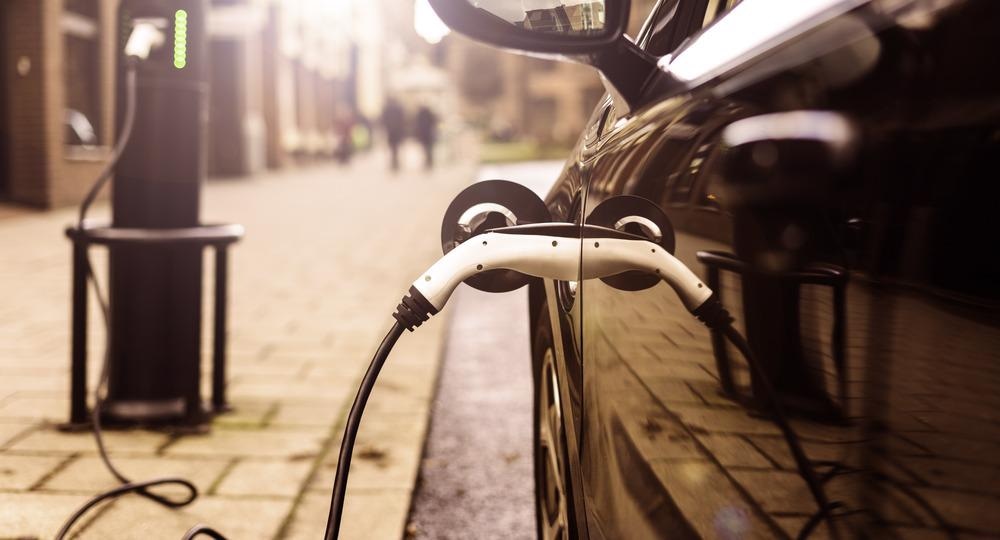Supercapacitors are a promising candidate for powering electric vehicles of the future, particularly around urban locations where there is potential for significant charging infrastructure. However, supercapacitors are often disregarded due to high production costs.

Image Credit: nrqemi/Shutterstock.com
In a new study published in Advanced Science, researchers from the Imperial College London and University College London described how they created novel free-standing supercapacitor electrodes with high energy storage capacity by making use of an organic by-product of paper manufacturing called lignin.
In the study, lignin was used as a replacement for costly graphene-based materials. The study team created a standalone electrode structure that is lighter and more compact than conventional electrodes, while still maintaining storage capacity.
To create its device, the team developed a revolutionary technique involving nanofiber mats of lignin being compressed into a dense structure. The team tailored the microstructure of its electrodes, decreasing the quantity of micrometer-sized holes that do not help with energy storage. The process maintained the porosity of individual fibers, which do store electrical energy. The researchers used advanced imaging to see the microstructures of their electrodes in three dimensions. The study team said being able to comprehensively envision the microstructure of supercapacitor devices is critical to improving the technology.
The researchers said it is crucial to develop a more affordable and sustainable replacement for current electrode designs. The team stressed the significance of lowering the production costs and the dependence on essential materials if supercapacitors are to play a role in decarbonizing the transportation industry, together with fuel cells and batteries.
In another study published in June 2020 in Energy Storage, researchers from Texas A&M University detailed a supercapacitor that was also produced from lignin. To make its electrode, the Texas team subjected purified lignin to potassium permanganate, a common disinfectant. Next, they applied high temperature and pressure to trigger an oxidation reaction that led to the breakdown of potassium permanganate and deposition of manganese dioxide. The resulting mixture of lignin and manganese dioxide was then applied to an aluminum plate to create the novel electrode.
Using the new electrode design, the researchers discovered their resulting supercapacitor had very secure electrochemical qualities. Specifically, they found the capacitance was not affected by thousands of charging and discharging cycles. The specific capacitance was also found to be as much as 900 times above what has been found for comparable supercapacitors.
Better than Batteries?
Even though it is the standard electric vehicle technology at this time, lithium-ion batteries may not be the ultimate solution. Supercapacitors offer answers to some ongoing issues with all-electric cars and can offer benefits to hybrid vehicles.
Supercapacitors are currently used in regenerative braking systems. Their high-power density enables them to quickly store and discharge power, which is quite useful for gathering energy created by a car's brakes.
As opposed to storing energy in chemicals, supercapacitors hold electricity in a static state, and because they depend more on physics than chemistry, supercapacitors do not decline as quickly as lithium-ion batteries, which presents a major opportunity for increasing the longevity of an electric vehicle.
By far the biggest benefit of supercapacitors compared to lithium-ion batteries is their capability to charge and discharge quickly. An electric vehicle powered by a supercapacitor could potentially be charged in minutes as opposed to hours. Supercapacitors are also well-suited to wireless charging. When you add in rapid-charging ability, it makes for a fast, seamless charging process.
Unfortunately, supercapacitors are not currently capable of storing as much power as lithium-ion batteries and this makes them less suited to electric cars. However, they should not be ruled out for future use: it took some time to draw out a satisfactory mileage range from lithium-ion systems.
Another big problem with using supercapacitors in vehicles is the time period in which they can hold a charge. If you left a car powered by a supercapacitor in an airport parking lot for a week, you would come back to find it without any charge at all. Quick charging could resolve this particular situation, a charger would have to be nearby and have sufficient amperage of a couple of thousand amps. The deployment of charging infrastructure for supercapacitors is not commercially viable, but as electric cars become more prevalent, the infrastructure will likely develop.
Despite their drawbacks, supercapacitors are useful in hybrid powertrains and carmakers such as Lamborghini are using them to boost performance. The Lamborghini Sian uses a supercapacitor and an electric motor to achieve 0-100 km per hour in just 2.8 seconds. With a price tag of around $3 million, however, the Sian is not the best example of a practical supercapacitor vehicle.
References and Further Reading
Hérou, Servann, et al. (2021) High-Density Lignin-Derived Carbon Nanofiber Supercapacitors with Enhanced Volumetric Energy Density. Advanced Science. 2100016. https://doi.org/10.1002/advs.202100016
Jha, S, Mehta, S, Chen, Y, et al. (2020) Design and synthesis of high performance flexible and green supercapacitors made of manganese-dioxide-decorated alkali lignin. Energy Storage. 2:e184. https://doi.org/10.1002/est2.184
West, S. (2021) New generation of supercapacitors set to electrify green transportation. Imperial College London. [Online] Available at: https://www.imperial.ac.uk/news/223353/new-generation-supercapacitors-electrify-green-transportation/
Moore-Coyler, R. (2019) What is a supercapacitor? The next step for EVs and hybrids explained. Car Magazine. [Online] Available at: https://www.carmagazine.co.uk/car-news/tech/what-is-supercapacitor-battery-ev-and-hybrid/
Suresh, V. (2020) Lightweight green supercapacitors could quickly charge devices. TechXplore. [Online] Available at: https://techxplore.com/news/2020-09-lightweight-green-supercapacitors-quickly-devices.html
Disclaimer: The views expressed here are those of the author expressed in their private capacity and do not necessarily represent the views of AZoM.com Limited T/A AZoNetwork the owner and operator of this website. This disclaimer forms part of the Terms and conditions of use of this website.